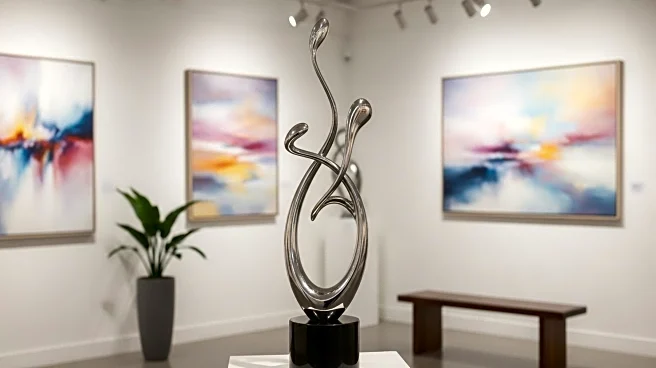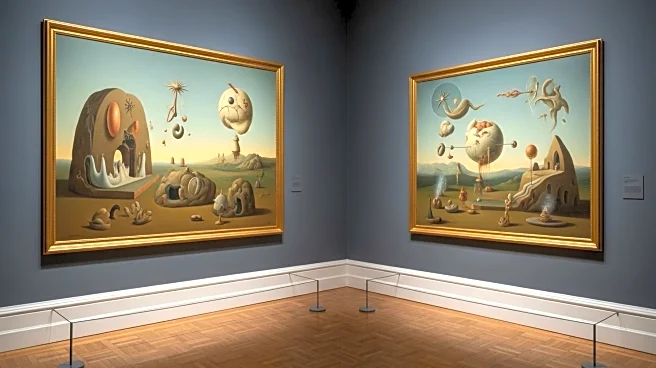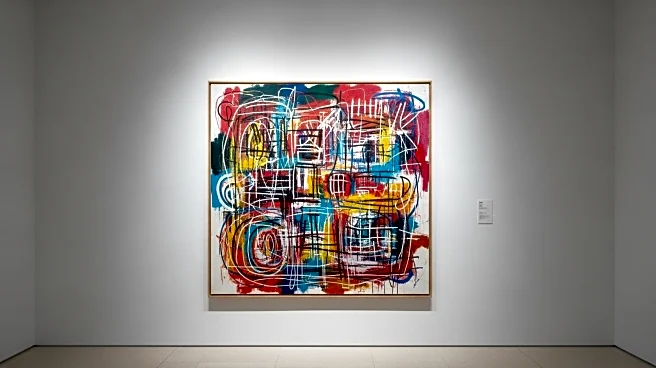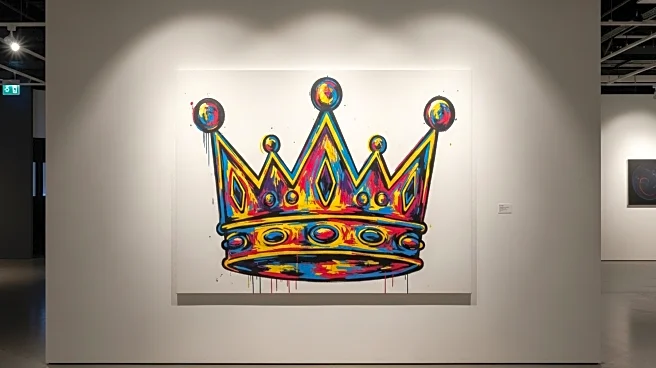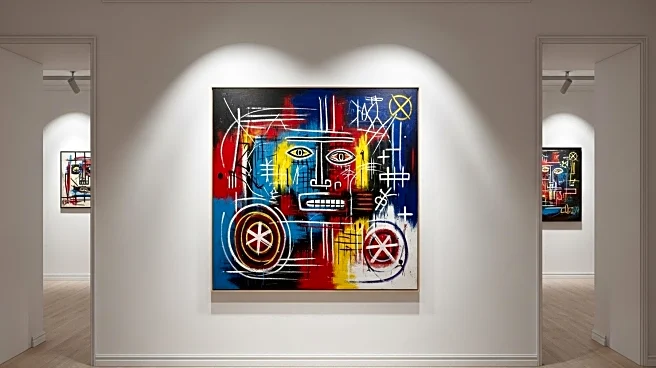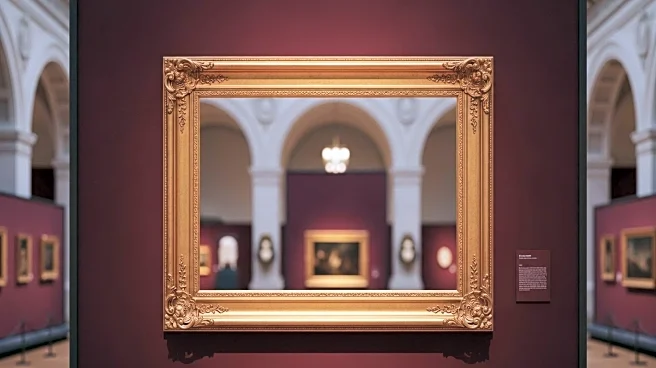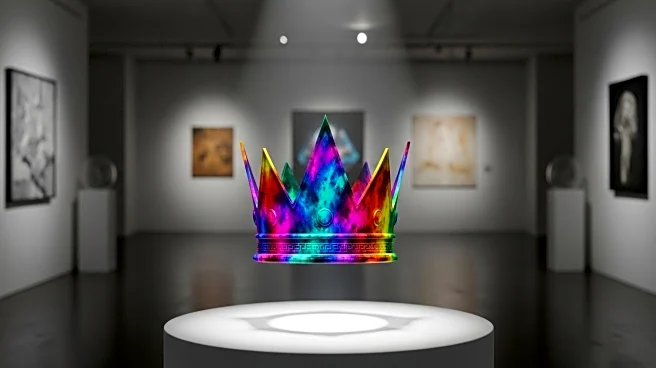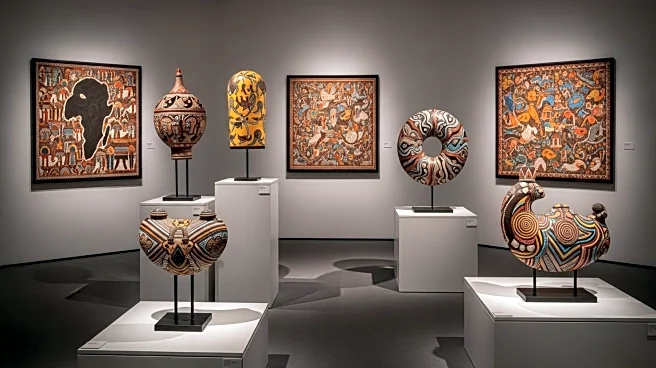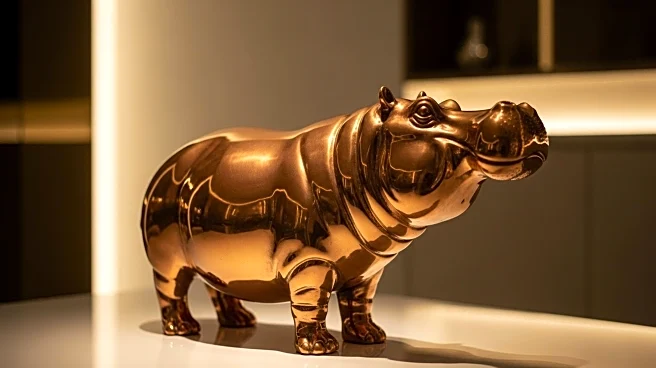What's Happening?
Sotheby’s is actively seeking a guarantor for three Klimt paintings valued at $300 million, part of the Leonard Lauder collection, as the art market faces challenges. The search for a single backer comes amid a period of rocky mid-season sales at major auction houses, including Sotheby’s, Christie’s, and Phillips. These auctions have seen a significant number of unsold lots, indicating a struggling art market. The Klimt paintings, with impeccable provenance, are expected to be a highlight of the upcoming November auction in New York. Sotheby’s aims to offset its risk through third-party guarantees, hoping to find a single backer for the trio of paintings.
Why It's Important?
The search for a guarantor for the Klimt paintings highlights the current volatility in the art market, which has seen a decline in auction sales by 8.8% in the first half of 2025 compared to the previous year. This situation reflects broader economic uncertainties affecting high-value art transactions. The successful sale of these Klimt paintings could signal a recovery or continued struggle in the art market, impacting collectors, investors, and auction houses. The involvement of high-profile billionaires as potential guarantors underscores the significance of these artworks and the financial stakes involved.
What's Next?
The upcoming November auction in New York will be a critical test for Sotheby’s and the art market. The outcome of the Klimt sale could influence future auction strategies and market confidence. If a guarantor is secured, it may stabilize expectations and encourage participation from other investors. The art world will closely watch whether Sotheby’s can achieve its financial goals or face losses, which could affect future high-value art sales and the strategies of major auction houses.
Beyond the Headlines
The pursuit of a guarantor for the Klimt paintings raises questions about the sustainability of high-value art investments during economic downturns. It also highlights the role of wealthy individuals in shaping the art market, potentially influencing which artworks are deemed valuable. The ethical considerations of art as an investment versus cultural heritage may also come into play, as the provenance and historical significance of the Klimt paintings are weighed against their monetary value.

